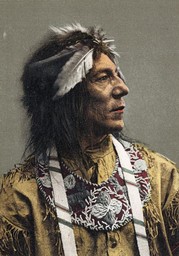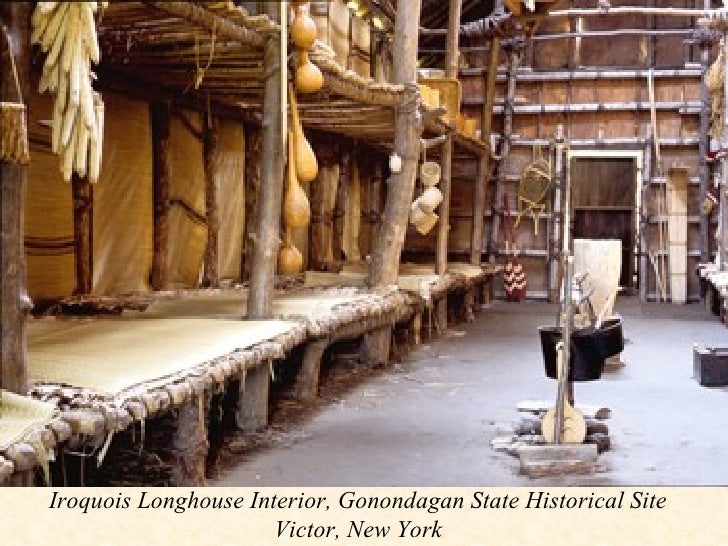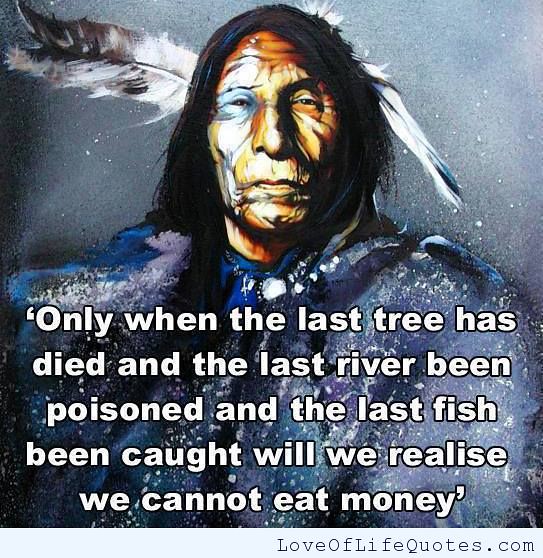- This topic has 34 replies, 20 voices, and was last updated 7 years ago by molgrips.
-
A thread in honour of America's First Nations
-
SaxonRiderFull MemberPosted 7 years ago
Feeling a bit wistful for some familiar cultural reference points, and got thinking about the Cree, Ojibway, and Assiniboine Indians among whom, and under whose influence, I grew up.
Consequently, I thought since there are a few outdoors-y folk on here that might actually appreciate their way of life, I would showcase some aspects of First Nations’ traditions.
First up, an Ojibway (Chippewa) man:
Ojibway art:
And Ojibway music:
[video]https://www.youtube.com/watch?v=f2tvLxYAZVY&list=RDf2tvLxYAZVY#t=110[/video]
And finally, the vast boreal forest they inhabit:
Please post anything that interests you about any tribe from around North America…
molgripsFree MemberPosted 7 years agoFascinating subject.
An essentially stone-age (not meaning that as derogatory in any way) culture that met head-on with the modern world. A terrible shame (among many) that people did not care about this until it was far too late.
It really is not very far away in time at all. This summer we visited a town called Estes Park in Colorado. It was built as a tourist town in the 1930s, so when my grandparents were alive. Before the town was built it was a summer camp for various native tribes. So in the time of my own grand parents it was a traditional native society that was not dissimilar to our own several thousand years ago. So when you go to Stonehenge and think this kind of thing was distant prehistory – it really wasn’t.
The wholesale destruction of natural and cultural environments in North America between say 1850 and 1950 is absolutely staggering. Even in the mid-west, you can drive around and see many older farmhouses that were the first buildings, the farm being the first development after trees were cleared. That’s how recently it was virgin wilderness… that thing we fetishise now.
It’s difficult to imagine how this felt to the natives. I read a piece written in the 1960s about an old native man who’d been brought to Estes Park and he talked about where their camps and sacred sites were. To see your entire world levelled and replaced by consumerist America, well, that defies imagination for me. And we make movies about alien invasions in which we get all sentimental about our ‘way of life’. Pah.
IHNFull MemberPosted 7 years agoYeah, the genocide of the First Nations in the Americas was appalling, and like Molgrips said, really not that long ago (and many argue, with some justification, continues to this day).
I started to read Bury My Heart at Wounded Knee and gave up, it was just too depressing 🙁
molgripsFree MemberPosted 7 years agoEven genocide doesn’t do it justice. It’s almost total erasure from the planet.
T1000Free MemberPosted 7 years agoThe museum of Native American History in DC is excellent and very thought provoking.
molgripsFree MemberPosted 7 years agoWhen I went to DC I’d just finished a big fat book on native Americans and that museum was a few weeks from opening – must go back to see it.
metalheartFree MemberPosted 7 years agoI picked this up at a 2ndhand book sakes about thirty years ago:
https://www.amazon.co.uk/Touch-Earth-Portrait-Indian-Existence/dp/0349122911
I remember it having a pretty profound effect on me.Even genocide doesn’t do it justice
Genocide: noun; the deliberate and systematic extermination of a national, racial, political, or cultural group.
I don’t know, seems to cover it to me…
BoardinBobFull MemberPosted 7 years agothat aspect really fascinates me. when you consider how advance europe and parts of africa and asia were at the time (culture, arts, architecture, science etc), why was america still so “stone age”? it can’t be the land mass argument
So for example, in 1473 construction started on the Sistine Chapel. Europe was very far advanced. Yet 20 year’s later Columbus sets sail and lands in countries where they all lived in tents or caves and finger painted animals on walls.
Quite mindblowing.
TrimixFree MemberPosted 7 years agoThere are some places still now that are undergoing such a change. I lived in the middle east in the 70’s – went back there a few years ago and you cant recognise it. Cultural not just buildings and roads.
Kids there now are growing up in modern shopping malls, but their dads lived in fishing villages and herded goats.
metalheartFree MemberPosted 7 years ago@boardinbob: yet the Mesoamericans managed to construct their pyramids…
metalheartFree MemberPosted 7 years agobut their dads lived in fishing villages and herded goats.
When did they evacuate St. Kilda? That seems pretty primitive to us these days.
molgripsFree MemberPosted 7 years agowhy was america still so “stone age”?
Isolation. Other continents were trading with each other, that trade carries ideas, grows economies and develops cultures. Brexiteers take note.
It’s called stone age not as a general description of culture, it just means they didn’t have metalworking (afaik anyway).
lands in countries where they all lived in tents or caves and finger painted animals on walls.
That’s not true. The tents were used by nomads in the West. Elsewhere they built wooden houses, stone and adobe houses, had towns and villages and made plenty of art.
This is Taos Pueblo, anywhere between 500 and 1000 years old, still lived in in the same way as always.
PigfaceFree MemberPosted 7 years agoTwo years ago on a road trip through the Dakotas I went to Wounded Knee then to Pine Ridge. One of the saddest most impoverished places I have ever visited. Desperate to see the way people were forced to live.
Have done a lot of reading about AIM, Leonard Peltier and the more recent history of that part of the world. Very sad.
mikey74Free MemberPosted 7 years agothat aspect really fascinates me. when you consider how advance europe and parts of africa and asia were at the time (culture, arts, architecture, science etc), why was america still so “stone age”? it can’t be the land mass argument
I’d venture that it’s the time it took humans to reach North America.
If you look at human caused megafauna extinctions (mammoths etc), they didn’t reach the Americas until late, some 12,000 years ago (15,000 for Alaska). Compare that Europe, where humans reached approx. 40,000 years ago, and to the Middle East, some 100,000 years ago. Based on this, it’s easy to see why America was some way behind the rest of the developed World.
molgripsFree MemberPosted 7 years agoAlso, not a lot of competition as it was very large and didn’t have many people. So you don’t to make much effort developing when you’re ok for most things.
But we’re thinking of North America. South America had some of the world’s major cities before Columbus.
eddiebabyFree MemberPosted 7 years agoMy late friend’s mother is Japanese /Native American and her father is English/ Dutch. Some great Christmases at her place when family came to visit.
SaxonRiderFull MemberPosted 7 years agoIn terms of development, there are, of course, the Western nomadic tribes, but we tend to forget about the Iroquois Confederacy that spanned parts of modern-day Quebec, Ontario, New York, and Michigan.
At least their social system was highly developed. Incredible stuff.
petecFree MemberPosted 7 years agoif you want to know why western Europe was more advanced than the Americas, Africa, Oceania etc, then this is book to read.
And a lot of it has to do with the width of the continent. Allows a greater range of plants/animals living in the same climatic zone.
martinhutchFull MemberPosted 7 years agoI started to read Bury My Heart at Wounded Knee and gave up, it was just too depressing
I read it at 13, rather influential on my views of America at that point!
Rockape63Free MemberPosted 7 years agoI don’t know how long some of these North American tribes existed before the ‘white man’ came along, but I was always fascianated by the fact that despite the advance in time, nothing ever changed…..they still lived the same way as their forefathers.
SaxonRiderFull MemberPosted 7 years agoAnd wonderfully, Rockape, in places they still do. Certainly many traditions, including the way they see the world, are still alive in spite of the serious social problems many of the communities are plagued with.
chewkwFree MemberPosted 7 years agoOp,
And Ojibway music:
I spent many hours watching the native American tribal dances on youtube last few months. Very interesting.
molgripsFree MemberPosted 7 years agoI was always fascianated by the fact that despite the advance in time, nothing ever changed
Well that was the case here too. Development is exponential (in the non-mathematical sense). Our ancestors lived the same way for tens of thousands of years. Imagine being born in the middle of the stone age. Ten thousand years of things being exactly the same behind you, ten thousand years in front of you… the land unchanging, no-one arriving by sea, no planes overhead, no roads being built, no new houses going in or retail park developments…
Re the USA, as discussed on my last bike ride with SaxonRider, the early US view of itself and its morals was quite.. let’s say uncomfortable, to us modern non-US people.
ircFull MemberPosted 7 years agoOf course it wasn’t a peaceful existence before the white man arrived.
and archeological and documentary evidence show great changes in tribal territories resulting from war before and after white contact.
Excavations at the Crow Creek site, an ancestral Arikara town dated to 1325, revealed the bodies of 486 people–men, women, and children, essentially the town’s entire population–in a mass grave. These individuals had been scalped and dismembered, and their bones showed clear evidence of severe malnutrition, suggesting that violence resulted from competition for food, probably due to local overpopulation and climatic deterioration.
http://plainshumanities.unl.edu/encyclopedia/doc/egp.war.023
molgripsFree MemberPosted 7 years agoCertainly not – they were all at the usual human squabbling.
But nothing like what came next.
metalheartFree MemberPosted 7 years agoOk. A bit OT but I found this book pretty interesting: https://www.amazon.co.uk/gp/product/0099223724/ref=pd_cp_14_1?ie=UTF8&psc=1&refRID=37TVBSMXGGPR0X8GNMT7
Has some interesting ideas about the human colonisation of the Americas. Amongst some pretty fascinating shit about Stone Age civilisations (obvs)…
trailofdestructionFree MemberPosted 7 years agoLate to the thread, so I hope this doesn’t get buried.
Remembered I had this link favourited somewhere, ‘An Expansive Photo Record Of Native American Life In The Early 1900s.’
An Expansive Photo Record Of Native American Life In The Early 1900s.
Enjoy
vorlichFree MemberPosted 7 years agoI started to read Bury My Heart at Wounded Knee and gave up, it was just too depressing
Same here, basically a list of atrocities and massacres.
Can anyone recommend a good book about First Nations culture, art, customs?SaxonRiderFull MemberPosted 7 years ago@vorlich: All his work is from the Ojibway perspective, but anything by Basil Johnston will be good. I read The Manitous back when it was first released and loved it. He’s got at least four books on Amazon.
SaxonRiderFull MemberPosted 7 years agoI love Sheriff Curtis’ work, trailofdestruction. Thanks for the link.
BigEaredBikerFree MemberPosted 7 years agoIMO I wouldn’t refer to the first nations as stone age. Metal working was long established in the Americas prior to the 1500’s. They also quickly took advantage of metals that the Europeans traded with them and incorporating them into art and weapons. I did hear that they didn’t have any use for gold in N.America – too soft for use, and they preferred the colours of other metals for art.
Having said that the people of S.America like the Incas knew how to work gold and other metals prior to Europeans arrival. Greed for Inca gold & silver by the Conquistadors in the 16th Century is well documented.
Thanks for posting Saxonrider; its been years since I’ve read anything on any of these subjects. Will have to have a look at the books that have been suggested.
molgripsFree MemberPosted 7 years agometal working was long established in the Americas prior to the 1500’s.
Interesting. Will look that up. Again, was only meant to be technical not derogatory.
The topic ‘A thread in honour of America's First Nations’ is closed to new replies.







